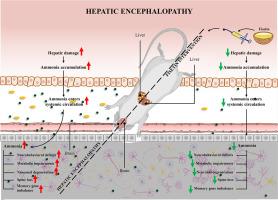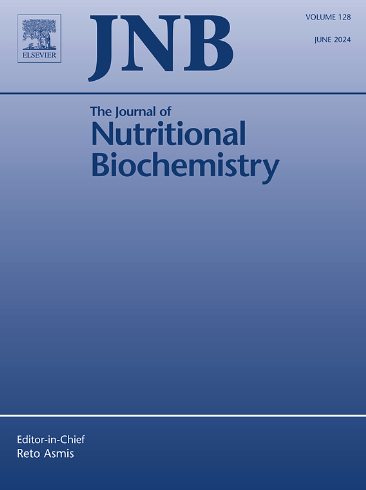Fisetin ameliorates neurobehavioral deficits in bile duct ligated rat model by restoring spine density and memory gene expression
IF 4.9
2区 医学
Q1 BIOCHEMISTRY & MOLECULAR BIOLOGY
引用次数: 0
Abstract
Chronic liver damage is characterized by cognitive impairments primarily due to metabolic imbalance notably hyperammonemia, termed as hepatic encephalopathy (HE). The present study investigated the neuroprotective potential of fisetin, a bioactive flavonoid, in bile duct-ligated (BDL) rat model that mimics HE. BDL rats exhibited significant liver morphological alterations, driven by inflammation and fibrosis causing metabolic imbalance and persistent chronic liver damage. These rats further demonstrated deficits in spatial memory, learning, and object recognition, as observed through various behavioral paradigms including morris water maze, barnes maze, Y-maze, and novel object recognition test. These cognitive deficits were accompanied by neurodegeneration, reduced spine density, disrupted expression of synaptic markers, and altered brain metabolite levels. Fisetin supplementation (25 mg/kg, p.o. for 28 d post-BDL surgery) to BDL rats significantly improved cognitive performance in the behavioural tests. Additionally, fisetin restored spine density and clustering patterns, upregulated key memory-associated genes (PSD95, synaptophysin, synaptotagmin-1), and reduced brain levels of ammonia, glutamate, and glutamine, which correlated with enhanced neurobehavioral outcomes. Histological assessments showed significantly reduced neuronal degeneration in BDL rats supplemented with fisetin, suggesting its ability to ameliorate HE-associated neurodegeneration. These findings collectively underscore fisetin’s neuroprotective potential in BDL rats by mitigating neurodegeneration, preserving synaptic integrity, and enhancing cognitive function.

非西汀通过恢复脊柱密度和记忆基因表达改善胆管结扎大鼠模型的神经行为缺陷。
慢性肝损伤的特征是认知障碍,主要是由于代谢不平衡,特别是高氨血症,称为肝性脑病(HE)。本研究在模拟HE的胆管结扎(BDL)大鼠模型中研究了非塞酮(一种生物活性类黄酮)的神经保护潜力。BDL大鼠表现出明显的肝脏形态改变,炎症和纤维化导致代谢失衡和持续的慢性肝损伤。通过morris水迷宫、barnes迷宫、y型迷宫和新型物体识别实验等多种行为模式观察,大鼠在空间记忆、学习和物体识别方面进一步表现出缺陷。这些认知缺陷伴随着神经退行性变、脊柱密度降低、突触标记物表达中断和脑代谢物水平改变。在行为测试中,给BDL大鼠补充非西汀(25mg /kg,每日服用,术后28天)可显著改善认知能力。此外,非西汀恢复脊柱密度和聚类模式,上调关键记忆相关基因(PSD95、Synaptophysin、synaptotagin -1),降低脑内氨、谷氨酸和谷氨酰胺水平,这些与增强的神经行为结果相关。组织学评估显示,补充非西汀后,BDL大鼠的神经元变性明显减少,表明其能够改善he相关的神经变性。这些发现共同强调了非瑟酮在BDL大鼠中的神经保护潜力,通过减轻神经变性,保持突触完整性和增强认知功能。
本文章由计算机程序翻译,如有差异,请以英文原文为准。
求助全文
约1分钟内获得全文
求助全文
来源期刊

Journal of Nutritional Biochemistry
医学-生化与分子生物学
CiteScore
9.50
自引率
3.60%
发文量
237
审稿时长
68 days
期刊介绍:
Devoted to advancements in nutritional sciences, The Journal of Nutritional Biochemistry presents experimental nutrition research as it relates to: biochemistry, molecular biology, toxicology, or physiology.
Rigorous reviews by an international editorial board of distinguished scientists ensure publication of the most current and key research being conducted in nutrition at the cellular, animal and human level. In addition to its monthly features of critical reviews and research articles, The Journal of Nutritional Biochemistry also periodically publishes emerging issues, experimental methods, and other types of articles.
 求助内容:
求助内容: 应助结果提醒方式:
应助结果提醒方式:


